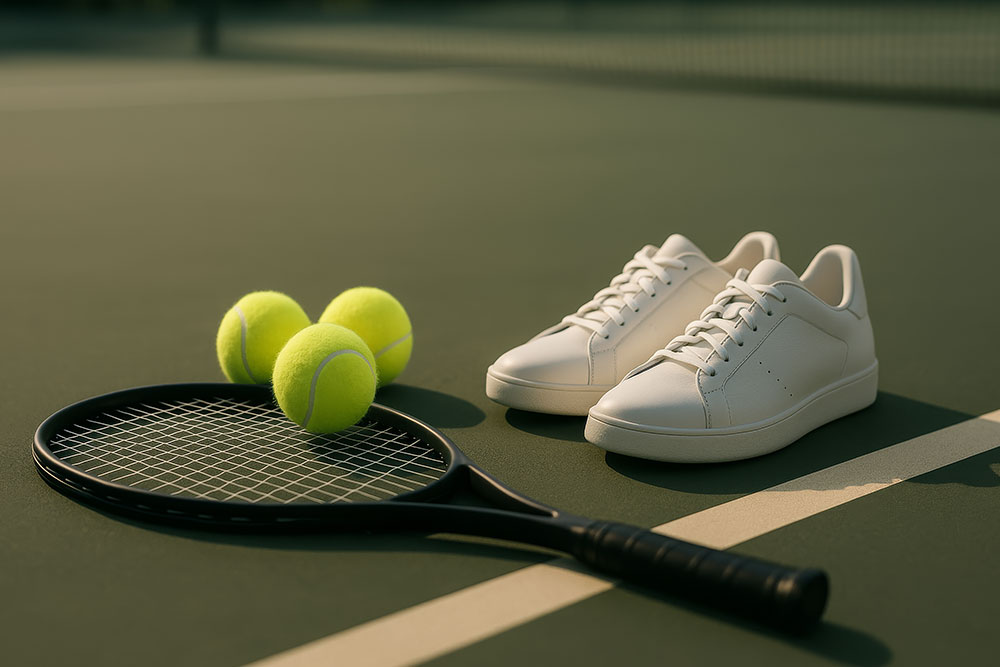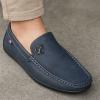We use cookies to make your experience better. To comply with the new e-Privacy directive, we need to ask for your consent to set the cookies. Learn more.
Why Choosing the Right Tennis Shoe Matters to Prevent Injuries

Fast direction changes add excitement to tennis but also amplify stress on joints. Research shows that court-specific shoes with stable sidewalls, surface-matched tread, and balanced cushioning lower the odds of ankle sprains, plantar-heel pain, and Achilles issues. By grasping how design meets female biomechanics, women can select affordable women shoes in Bahamas that feel good today and preserve long-term mobility.
Why Footwear Choice Matters More Than You Think
A single point can load the lower limb with forces up to five times body weight, thanks to sprints and split-step stops. Studies of college athletes found that shoes missing firm lateral columns nearly doubled the rate of ankle sprains. Because women report foot-related problems more often than men, inadequate footwear brings an outsized cost.
Understanding the Main Injury Risks
Lateral Ankle Sprains
Quick pivots pull the foot outward. When the shoe lacks rigid sidewalls or has an overly soft heel, the ankle can roll, stretching or tearing the ligaments.
Plantar Fasciitis and Heel Pain
Inflammation of the thick tissue under the arch flares when the heel absorbs repeated shocks without enough cushioning or when the midsole has lost its rebound. A clinical review showed that rotating supportive pairs reduces pressure on the fascia and speeds.
Achilles Tendon Stress
Heel-drop height changes tendon load. Laboratory work using acoustic sensors revealed that some running shoes actually increase Achilles tension during walking. Separate biomechanical tests confirmed that raising the heel slightly can lower peak ankle moments during running and help calm irritated tendons.
Surface-Related Overload
Hard courts transmit more shock than clay, while grass can be slippery. The ITF notes that pairing tread patterns with the surface texture trims injury risk as well as boosts traction. Epidemiological data show fewer lower-limb issues on clay, supporting the value of adaptable outsole designs.
What Makes a Tennis Shoe “Right”?
- Fit first – The American Academy of Podiatric Sports Medicine advises opting for a model that bends at the ball of the foot and leaves a finger’s width in front of the toes. On-court comfort improves when the heel is snug, the arch feels supported, and the upper wraps without pinching.
- Lateral stability – Sturdy wrap-around outrigger pieces and reinforced eyelets brace the foot during slides and cuts, features highlighted in APMA guidance for court sports.
- Responsive cushioning – A systematic review reported that midsoles tuned for energy return can lower repetitive-stress injuries by moderating impact peaks. Yet excess softness may allow the ankle to wobble, so balance matters.
- Surface-specific outsole – Herringbone patterns grip hard courts, while deeper, spaced lugs shed clay. The ITF equipment briefing emphasizes that no single outsole works everywhere.
- Women-specific geometry – Women tend to have narrower heels and higher arches. Brands that tailor lasts for these proportions address fit gaps left by downsized men’s models. Separate gait analyses confirm that gender-focused shapes reduce hotspots and friction.
Practical Shopping Tips
- Online convenience is unbeatable, and browsing women shoes online lets you scan multiple brands for court-ready details.
- If you play recreational sets after work, resist pairing your outfit with casual women shoes online; fashion sneakers rarely supply the torsional support tennis demands.
- During a seasonal Women shoes online sale, add two identical pairs so you can alternate them; rotation keeps cushioning lively and reduces overuse risk.
- Before clicking checkout, measure your feet at night when they are slightly larger; small fit errors magnify once you sprint diagonally for a drop volley.
- When sizing feels tricky, search “women shoes near me” and visit local trial benches; knowledgeable staff can spot ankle wobble you might miss.
When to Replace Your Pairs
Just because the upper looks fresh doesn’t mean the midsole still works. The United States Tennis Association notes that most court shoes lose bounce after roughly 45–60 hours of play. Trailing indicators include smoother tread at the pivot point, persistent arch soreness the morning after matches, or a hollow sound when you slap the sole with a palm. Regularly rotating two pairs, as suggested in clinical studies on plantar-fasciitis management, gives foam time to rebound between sessions.
Injury Prevention Pays Off
Choosing the right tennis shoe is not a vanity project; it’s preventive care for joints you rely on every day. Models that fit the female foot, match the court, and retain their structure act like mobile safety gear—letting you chase every drop shot today while safeguarding tomorrow’s morning run. Treat them as equipment, track their mileage, and your body will thank you with unbroken seasons on the baseline and beyond. Also read, why tennis shoes are a stylish yet practical solution for moms. Search “shoe stores near me” online to start shopping.












